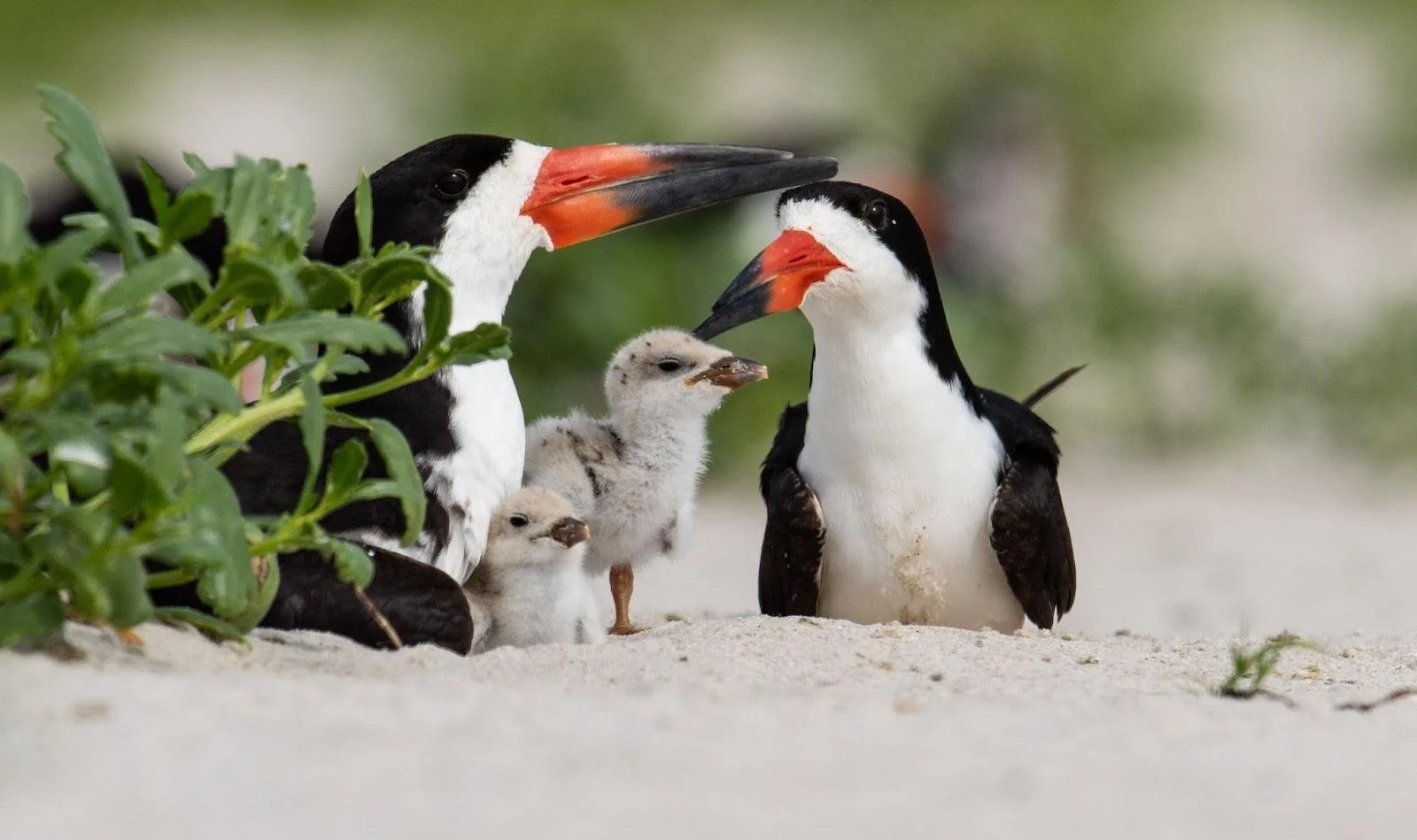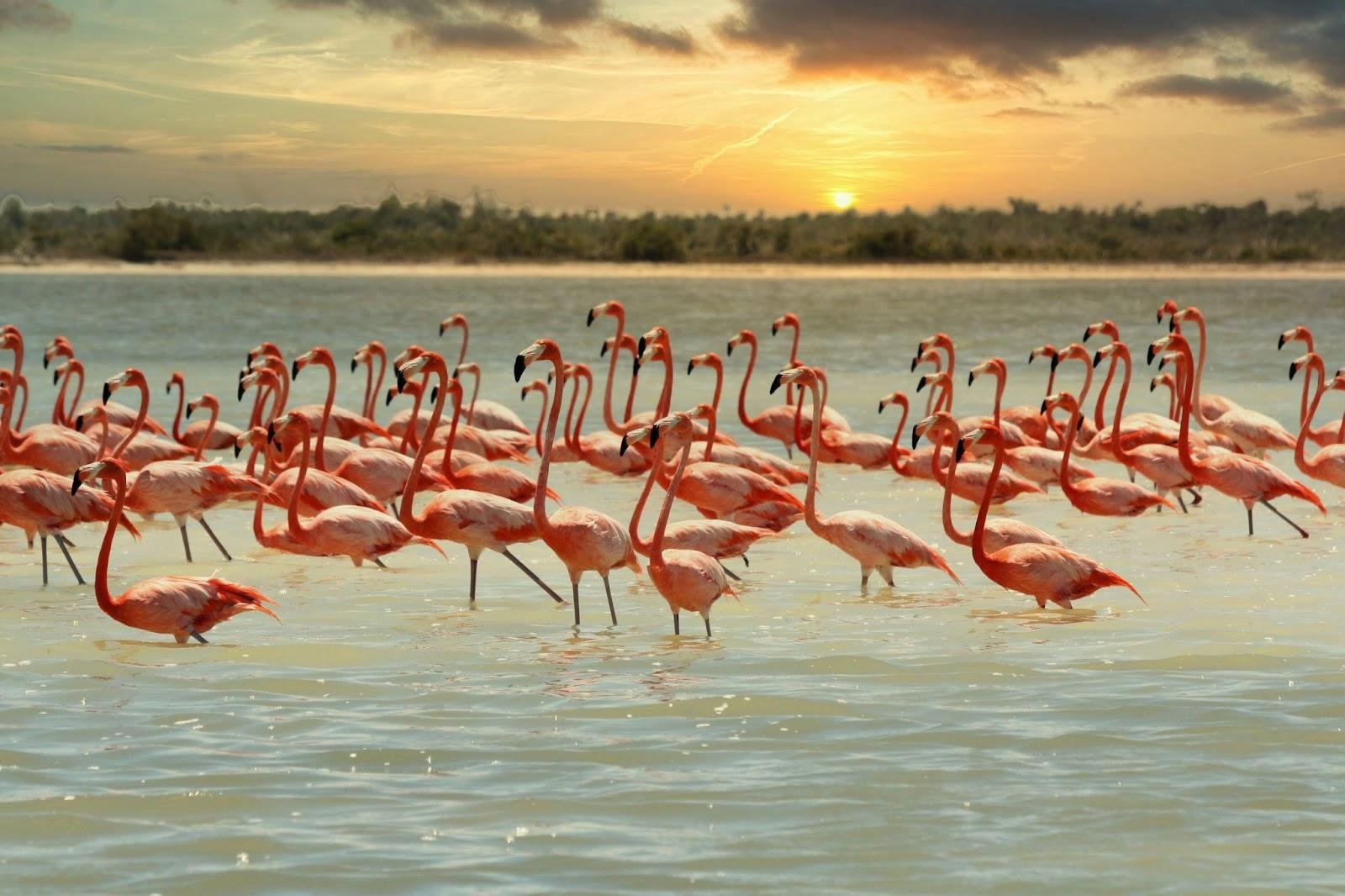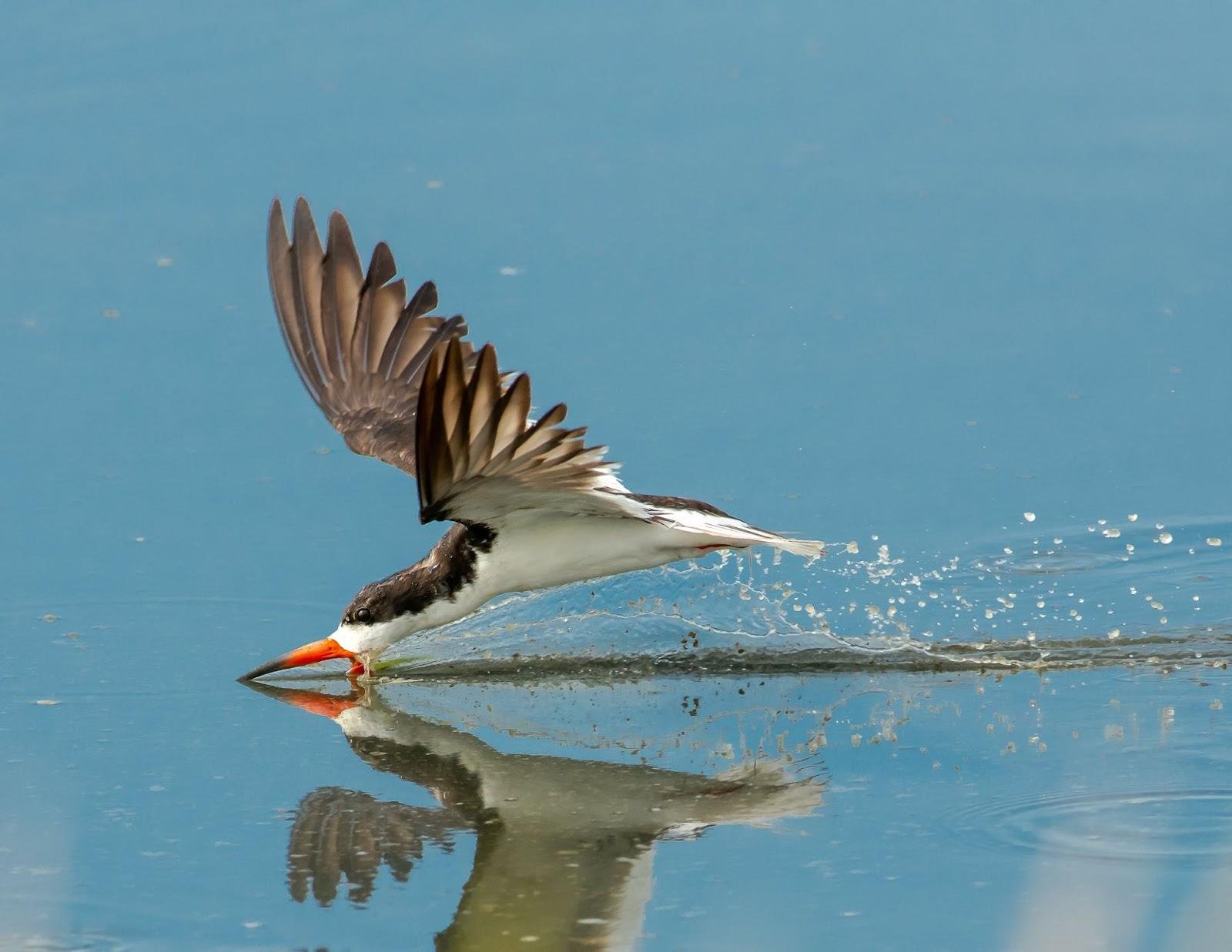Written By: Zach Norton
Florida’s stretches of pristine beaches attract vacationers from around the globe. People flock here to see the clean sand, blue water, and bright orange sun. But long before tourists discovered Florida's sands, others flocked here — birds.
The Florida beaches are home to countless bird species that come here to feed, breed, and escape predators. Let's look at some beautiful and strange birds that call the Florida beaches home.
1. Greater Flamingo
Image by HGU Foto on Shutterstock
When people think about Florida and birds, usually the first species that comes to mind is the Greater Flamingo.
There has been some debate about whether greater flamingos are native to the Sunshine State. Regardless of their origin, flamingos have become synonymous with Florida. With their long legs, vivid pink colors, and black-tipped beaks, they are as recognizable as oranges.
2. Brown Pelican
Image by Brian Lasenby on Shutterstock
The bird species that’s perhaps second most frequently associated with Florida is the Brown Pelican. Although maybe not as graceful and elegant as the Greater Flamingo, they are nonetheless an excellent example of Florida's abundant bird life.
Their large, stocky body and enormous bill can be almost comical in appearance. When observed on land, the Brown Pelican is a bit of a comedian as it waddles about looking for scraps or bait from local anglers. However, the pelican is quite graceful when it takes to the air.
3. Roseate Spoonbill
Image by Harry Collins Photography on Shutterstock
Our next species is often confused with the flamingo, but the Roseate Spoonbill is one of a kind.
Like the flamingo, the spoonbill sports vivid pink plumage atop long legs perfect for wading. However, instead of a curved bill and pink head, the spoonbill has a white head and a distinctive spoon-shaped bill.
This stunning example of Florida wildlife spends almost all its time searching the waters and wetlands for its next meal. You will need to be quick and silent if you wish to spot one on your own, as they are timid.
4. Oystercatcher
Image by Archaeopteryx Tours on Shutterstock
The oystercatcher has more to offer than a catchy name. It’s also an eye-catching example of what can be found on the local beaches.
Although the white belly and black body resemble many other birds in the area, the long red bill sets it apart. Coupled with equally catching legs and deep red eyes, the oystercatcher will surely capture some beachgoers along with its next oyster dinner.
5. Laughing Gull
Image by Brian Lasenby on Shutterstock
A gull may not seem a likely candidate for a list of beautiful birds, but the Laughing Gull is a lovely exception. Its black head and bright red beak make it stand out among its peers.
But don’t let its good looks fool you! The Laughing Gull, so named because its call resembles a mocking laugh, is full of mischief. Just as its beauty takes you in, it will swoop down, land on a rail or your boat ladder, and wait for a chance to take an unattended lunch.
6. Black-Bellied Plover
Image by Elliotte Rusty Harold on Shutterstock
As America's largest plover, the Black-bellied Plover is on many bird watchers' lists. If you keep an eye out for it, you may glimpse one of Florida's most stunning species.
With a black face, chest, and belly, and white plumage topped by a gray speckled crown, the Black-bellied Plover is genuinely stunning.
7. Long-Billed Dowitcher
Image by Eivor Kuchta on Shutterstock
The Long-billed Dowitcher, characterized by its long, thin bill and trim gray or light brown speckled body, immediately makes observers think "shorebird." Countless paintings and carvings depict this bird, even by artists who have never seen it in person.
Although similar to its smaller cousin, the Short-billed Dowitcher, this species is easily identified by its unique "peet-peet-ter-wee-too" sound as it rapidly probes the sand for food.
8. Snowy Egret
Image by A. Michael Brown on Shutterstock
The Snowy Egret is the royalty of the seashore. It’s one of Florida's larger sea birds and has a body similar to a heron. With eye-catching white plumage and contrasting jet-black legs and yellow feet, the snowy egret is also one of the most stunning.
While its stunning plumage was almost its downfall due to high demand in the hat trade, the snowy egret has rebounded. Seeing one in the wild is a breathtaking experience.
9. Black-Necked Stilt
Image by Jim Schwabel on Shutterstock
As the word “stilt” in its name suggests, the Black-necked Stilt's most prominent feature is its long legs. Like many beach species, the body combines light and dark. It has a black head, wings, and beak with a white underside and gray tail feathers.
Keep an eye on the shoreline, and you will see the Black-necked Stilt patrolling the shallows and plucking small fish from the water. Afterward, they will head home to nearby nests built of beach debris.
10. Sanderling
Image by Paul Reeves Photography on Shutterstock
Sanderlings are another iconic Florida species. You’ve likely seen them on the beach, but you may not have known what they were called. The black bill, eyes, and tiny black legs stand out against the gray-colored bodies and the surrounding sand.
Like many human residents, the sanderling spends only part of the time in the Sunshine State. After breeding in the High Arctic Tundra, they head south for warmer weather, making them among the furthest yearly commuters.
11. Royal Tern
Image by Agami Photo Agency on Shutterstock
Often mistaken for a gull, the Royal Tern is distinguished by its completely orange beak. Add a white body and black feathers atop its head, and you have another stunning example of what Florida offers bird watchers.
While you’ll likely see the royal tern wading or walking along the sandy shores, the real show is when they take to the air. They seem to hover motionless as they try to spot their prey, only to dive almost effortlessly to catch it.
12. Black Skimmer
Image by anto1977 on Shutterstock
Most beachgoers have witnessed the black skimmer, even if they didn’t realize it. The long wingspan, black body, and white underbelly bird can be seen cruising low over area waters in search of an easy meal.
Next time you are at the beach and see such a bird, look closely at its bill. A slim lower mandible that extends beyond the upper will distinguish the black skimmer from other beach birds.
Although these are some of Florida's most stunning and iconic beach birds, there are others you are likely to spot. Florida is home to over 18 beach-dwelling species that may cross your path. So be sure to have your binoculars close as you never know what you might spot cruising the local waters.















